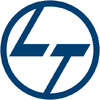
i
Voltas
Filter interviews by
Voltas Safety Officer Interview Questions and Answers
Voltas Safety Officer Interview Experiences
4 interviews found
(1 Question)
- Q1. Safety roles and responsibilities
Interview Preparation Tips

(2 Questions)
- Q1. What is the Safety
- Ans.
Safety refers to the measures and precautions taken to prevent accidents, injuries, and hazards in a particular environment.
Safety involves identifying potential risks and implementing strategies to mitigate them.
It includes creating and enforcing safety policies and procedures.
Safety officers conduct inspections, train employees, and investigate incidents.
Examples of safety measures include wearing personal protective...
- Q2. What is the risk
- Ans.
The risk refers to the potential for harm or loss that may arise from a hazardous situation or activity.
Risk is an inherent part of any workplace or activity and must be identified, assessed, and managed.
It involves evaluating the likelihood and severity of potential hazards and taking appropriate measures to control or mitigate them.
Examples of risks in a safety officer role may include workplace accidents, exposure t...
Interview Preparation Tips
I appeared for an interview before Feb 2024.
(1 Question)
- Q1. Roles and responsibilities of the Safety Officer
- Ans.
Safety Officer is responsible for ensuring workplace safety, implementing safety procedures, conducting safety inspections, and training employees on safety protocols.
Develop and implement safety policies and procedures
Conduct regular safety inspections and audits
Train employees on safety protocols and procedures
Investigate accidents and incidents to determine root causes
Ensure compliance with safety regulations and st...
I applied via Naukri.com and was interviewed before Aug 2020. There were 5 interview rounds.
Interview Questionnaire
1 Question
- Q1. Various technical questions.
Interview Preparation Tips
Voltas interview questions for designations
Interview questions from similar companies

I applied via Referral and was interviewed before Oct 2022. There were 3 interview rounds.

(2 Questions)
- Q1. Previous experience
- Q2. Education background
(1 Question)
- Q1. Knowledge about safety

Safety Officer Interview Questions & Answers
Godrej & Boyce Manufacturingposted on 20 Sep 2023
I applied via Naukri.com and was interviewed in Aug 2023. There were 4 interview rounds.

Aptitude test related to EHS field
(3 Questions)
- Q1. Technical round related to safety
- Q2. What is confined space
- Ans.
Confined space is an area that is not designed for continuous occupancy, has limited entry and exit points, and may have hazardous conditions.
Limited entry and exit points
Not designed for continuous occupancy
May contain hazardous conditions such as poor ventilation, toxic gases, or engulfment hazards
- Q3. What is the process of demolition work
- Ans.
Demolition work involves planning, preparation, and execution of tearing down structures safely.
Obtain necessary permits and approvals
Survey the site for potential hazards
Remove hazardous materials like asbestos
Establish exclusion zones for safety
Use appropriate equipment like excavators or wrecking balls
Follow proper disposal procedures for debris
Ensure proper communication and coordination among team members
(1 Question)
- Q1. Salary discussion

I applied via Approached by Company
(4 Questions)
- Q1. Ehs longform please let me
- Q2. What is fire please tell me
- Ans.
Fire is a rapid chemical reaction that releases heat, light, and various gases.
Fire is a result of the combustion process, where a fuel source combines with oxygen in the presence of heat to produce flames.
It requires three elements to sustain: fuel, oxygen, and heat.
Examples of fuel sources include wood, paper, gasoline, and natural gas.
Fire can spread rapidly and pose a significant risk to life and property if not co...
- Q3. How many types of fire extinguisher
- Ans.
There are five main types of fire extinguishers: water, foam, dry powder, CO2, and wet chemical.
Water fire extinguishers are suitable for Class A fires involving solid materials like wood or paper.
Foam fire extinguishers are effective for Class A and B fires involving flammable liquids like petrol or oil.
Dry powder fire extinguishers are suitable for Class A, B, and C fires involving flammable gases like propane.
CO2 fi...
- Q4. 4 types types
- Ans.
The 4 types of safety hazards are physical, chemical, biological, and ergonomic.
Physical hazards include slips, trips, falls, and machinery accidents.
Chemical hazards involve exposure to harmful substances like gases, liquids, or solids.
Biological hazards come from exposure to viruses, bacteria, fungi, and other living organisms.
Ergonomic hazards result from poor workstation design, repetitive tasks, or improper liftin
Very nice I wood like

I applied via Walk-in and was interviewed before Nov 2021. There were 2 interview rounds.

(2 Questions)
- Q1. Are you married or not
- Q2. How much your salary expectation
Interview Preparation Tips
- Basic

Safety Officer Interview Questions & Answers
Larsen & Toubro Limitedposted on 12 Jun 2020
Interview Questionnaire
2 Questions
- Q1. About work experience. i.e HIRA,SOP,
- Q2. Basis knowledge.

Safety Officer Interview Questions & Answers
HPCL-Mittal Energy Limitedposted on 23 Feb 2020
I applied via Recruitment Consultant and was interviewed in Jan 2020. There were 7 interview rounds.
Interview Questionnaire
9 Questions
- Q1. About legal requirements?
- Q2. Accident investigation?
- Q3. Action plan?
- Q4. HSE policy?
- Q5. Role and responsibilities of safety officer?
- Ans.
Safety officers are responsible for ensuring the safety of employees in the workplace by implementing safety protocols and procedures.
Developing and implementing safety policies and procedures
Conducting regular safety inspections and audits
Providing safety training to employees
Investigating accidents and incidents to determine causes and prevent future occurrences
Ensuring compliance with safety regulations and standard
- Q6. IS standard of PPEs?
- Ans.
IS standards specify the requirements for Personal Protective Equipment (PPEs) in India.
IS 3521:2015 specifies the requirements for industrial safety helmets.
IS 9473:2002 specifies the requirements for safety footwear.
IS 9167:1979 specifies the requirements for eye protectors.
IS 10245:2004 specifies the requirements for respiratory protective devices.
IS 15323:2003 specifies the requirements for high visibility clothing...
- Q7. About fire& Fire hazard?
- Q8. About scaffolding and it parts and hazards in working at heights?
- Q9. IMS,QMS,EMS,OSHAS?
Interview Preparation Tips
Voltas Interview FAQs
Tell us how to improve this page.
Voltas Interviews By Designations
- Voltas Assistant Manager Interview Questions
- Voltas Service Engineer Interview Questions
- Voltas Safety Officer Interview Questions
- Voltas Site Engineer Interview Questions
- Voltas AC Technician Interview Questions
- Voltas Finance Manager Interview Questions
- Voltas Design Engineer Interview Questions
- Voltas Sales Executive Interview Questions
- Show more
Interview Questions for Popular Designations
- Safety Supervisor Interview Questions
- Fire & Safety Officer Interview Questions
- Senior Safety Officer Interview Questions
- Safety Engineer Interview Questions
- Safety Manager Interview Questions
- Drug Safety Associate Interview Questions
- Safety Supervisor, Safety Officer Interview Questions
- Safety Executive Interview Questions
- Show more
Voltas Safety Officer Interview Process
based on 3 interviews
1 Interview rounds
- Technical Round
Interview Questions from Similar Companies
Fast track your campus placements
Voltas Safety Officer Reviews and Ratings
based on 54 reviews
Rating in categories
|
Assistant Manager
396
salaries
| ₹4 L/yr - ₹16.6 L/yr |
|
Service Engineer
218
salaries
| ₹1.8 L/yr - ₹9.5 L/yr |
|
AC Technician
186
salaries
| ₹1 L/yr - ₹6 L/yr |
|
Safety Officer
154
salaries
| ₹2.8 L/yr - ₹7 L/yr |
|
Senior Engineer
148
salaries
| ₹3.5 L/yr - ₹12 L/yr |

Vivo

OPPO

Dell

LG Electronics
- Home >
- Interviews >
- Voltas Interview Questions >
- Voltas Safety Officer Interview Questions





















